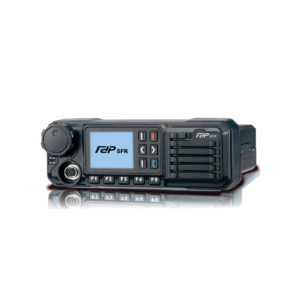is not like a conventional Single Frequency Repeater (parrot repeater). This SFR works a bit differently. The FDP SFR simultaneously receives and transmits at the same time, on the same frequency.
It does this by utilising DMR’s two time slots concurrently. The FDP SFR receives on one time slot, whilst transmitting on the other.
Advantages:
The SFR can be used on an existing LMRS single frequency license (assuming adherence to the license parameters).
A duplexer is not required, so you are not bound by the bandwidth of the duplexer. This gives you frequency agility. No duplexer, no insertion loss (power loss) either.
Ease of set-up.
A very cost effective DMR Repeater Solution.
Increased coverage on your current license, even at low power limits.
Can be used as a Mobile or Base Transceiver with the use of a microphone, or when in repeater mode – by using a handheld unit in close proximity as a ‘remote handheld device’.
Relays other DMR radio’s encryption, for maximum security.
A talk-around function is not required when the repeater is out of range, making operation much simpler. The DMR radios will simply talk directly to each other instead (without having to separately activate talk-around or change the channel – like you would have to do with a conventional duplex repeater).
Operation:
The SFR should be used with DMR radios capable of Tier II DMO dual slot trunk (sometimes referred to as pseudo trunk). DMO trunk radios will use whichever time slot is available.
Specifications:
Mode: DMR (Digital Mobile Radio Standard) and Analogue.
TDMA Dual Slots – Tier II Digital
DMO Trunk (pseudo) & RMO
Single Frequency Repeater Mode (DMR) / Transceiver Mode
Analogue integration inc CTCSS/DCS
Approved for LMRS use to 25W
Frequency Range: 400 – 480Mhz
160 Channel – 16 channels per zone
Channel spacing: 12.5kHz digital / 25kHz & 12.5kHz analogue
Power Output: 25W/10W
Modulation: 4FSK – 7K60FXD 7K60FXE 16K0F3E & 10K1F3E
Sensitivity: 0.25uV – 5% BER digital/12dB SINAD analogue
Vocoder: AMBE+2
Weight: 1.5kg
Size: 175mm (L) x 175mm (W) x 63mm (H)
Nominal Operating Voltage: 13.8V negative ground
5 Programmable Function Keys – 10 different settings
Relays digital encryption from other radios, for maximum security
Analogue Scrambler
Large LCD Screen for easier menu navigating
Rugged design
ETSI and AS/NZS Compliant
Comes with Keypad Microphone, Mounting brackets and Fused Power Lead.
Question: How can I use my 5W licence on a repeater that does 10W?
Answer: The FDP SFR produces 25W on High power and 10W on Low power. However a 5W licence allows 8.3W EIRP (Effective Isotropic Radiated Power) and this is to take antenna gain and other factors into account. So depending on the antenna chosen, and taking into effect feedline loss (length and quality/type, at a given frequency) and connector insertion loss, an EIRP figure can be easily calculated.
To give an example, if you were running 10W (40dBm) on UHF (let’s say 465Mhz) and your feedline was 26 feet of RG58 (2.9dB loss), using 2 x PL259 connectors (0.18db loss total), to a basic dipole antenna (2.15dBi gain), your EIRP would be 39.07dBm or 8.07W.
Conversely, if you have a license that allows 83W EIRP, this can be accomplished by running the SFR on high power, using low loss coax and high gain antenna.
Question: Whilst I can use the SFR on my single frequency license, can I use the SFR on a duplex repeater license?
Answer: Due to the nature of the SFR’s operation, at a standalone site you can use either the TX or RX side of a duplex repeater license (or use two SFR’s on both). At a communal site, you should only use the TX side of the license.
Question: Will the FDP SFR work with Mototrbo 2000/4000 series radios
Answer: Yes – when DCDM (Dual Capacity Direct Mode) is not enabled. Hytera call this Strict TDMA Mode.

